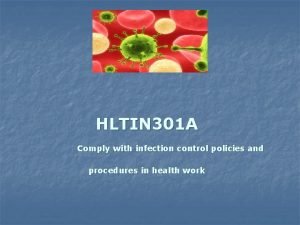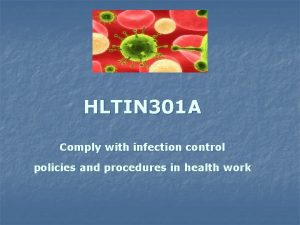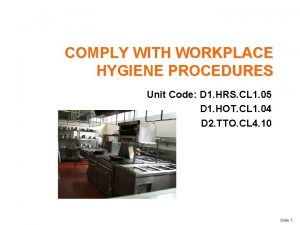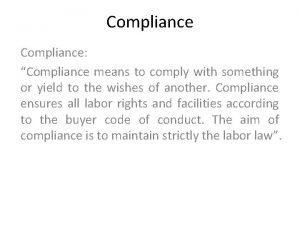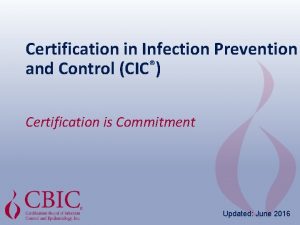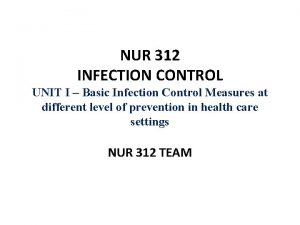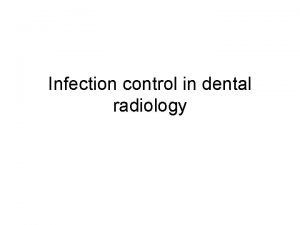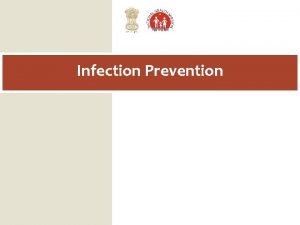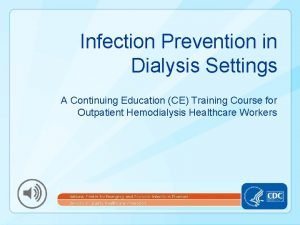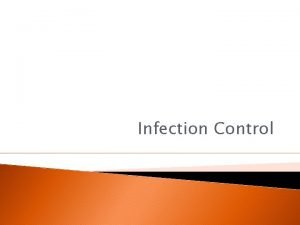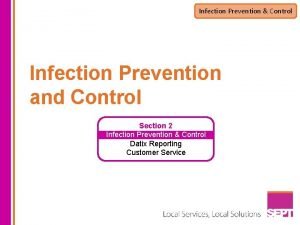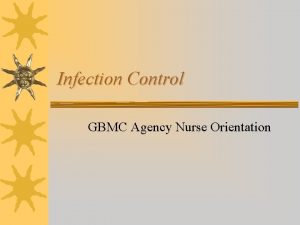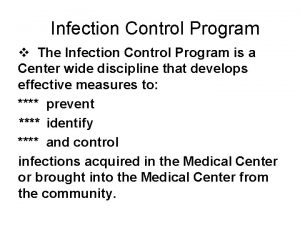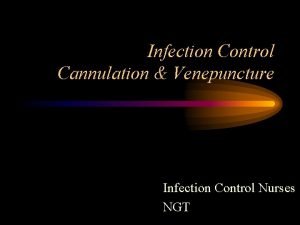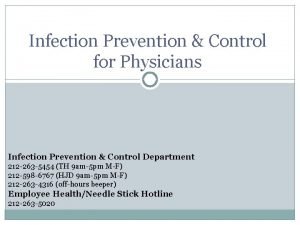HLTIN 301 A Comply with infection control policies
















- Slides: 16

HLTIN 301 A Comply with infection control policies and procedures in health work

Hand Hygiene

Why is Hand Hygiene so Important? BECAUSE The most common mode of transmission of pathogens (bugs, germs, bacteria etc) is via the HANDS!

There is strong evidence to suggest that there is a Relationship Between Hand Hygiene and Healthcare-Associated Infections § Substantial evidence suggests that correct hand hygiene REDUCES the incidence of infections

Common areas where hand contact is made and possible pathogens ‘lurk’!

Why practice good hand hygiene? n n To remove visible dirt from hands To prevent the transfer of bacteria from the home into the hospital/care facility To prevent transfer of bacteria from the hospital/care facility to the home To prevent infections that patients acquire in the hospital

Why DON’T Health care workers practice good hand hygiene? § Handwashing agents can cause irritation and dryness to skin § Sinks are inconveniently located/lack of sinks § Lack of soap and paper towels § Too busy/insufficient time § Understaffing/overcrowding § Patient needs take priority § Low risk of acquiring infection from patients

Colonized or Infected: What is the Difference? n n n People who carry bacteria without evidence of infection (fever etc) are colonized. If an from infection develops in a person, it is usually bacteria that colonize patients Bacteria that colonize patients can be transmitted from one patient to another by the hands of healthcare workers Bacteria can be transmitted even if the patient is not infected ~

Types of hand washing / Definitions n n n Hand hygiene n Performing handwashing, antiseptic handwash, alcoholbased handrub, surgical hand hygiene/antisepsis Handwashing n Washing hands with plain soap and water Antiseptic handwash n Washing hands with water and soap or other detergents containing an antiseptic agent Alcohol-based handrub n Rubbing hands with an alcohol-containing preparation Surgical hand hygiene/antisepsis n Handwashing or using an alcohol-based handrub before operations by surgical personnel

Indications for Hand Hygiene § When hands are visibly dirty, contaminated, or soiled, wash with soap and water. § If hands are not visibly soiled, use an alcoholbased handrub for routinely decontaminating hands.

How often should you clean your hands after touching a PATIENT’S INTACT SKIN? Always Often Sometimes Never

Specific Indications for Hand Hygiene n n Before: n Patient contact n Putting on gloves After: n Contact with a patient’s skin n Contact with body fluids or excretions, non-intact skin, wound dressings n Removing gloves

Which hand hygiene method is best at killing bacteria? 1. Plain soap and water 2. Antimicrobial soap and water 3. Alcohol-based hand rub

Which hand hygiene method is best at killing bacteria? n n n Plain soap and water Antimicrobial soap and water Alcohol-based hand rub

Recommended Hand Hygiene Technique n Handrubs n n n Apply to palm of one hand, rub hands together covering all surfaces until dry Volume: based on manufacturer Handwashing n Wet hands with water, apply soap, rub hands together for at least 15 seconds n Rinse and dry with a paper towel n Use paper towel to turn off the tap

Using gloves for all contact with patients is a useful strategy for reducing risk of transmission of organisms
 Hltin
Hltin Hltin
Hltin Comply or explain principle
Comply or explain principle Observe workplace hygiene procedures
Observe workplace hygiene procedures Comply with something
Comply with something Acquiesce noun
Acquiesce noun Labial mounting method
Labial mounting method Disinfectants used in salons must be milady
Disinfectants used in salons must be milady Chapter 16 infection control and standard precautions
Chapter 16 infection control and standard precautions Chapter 16 infection control and standard precautions
Chapter 16 infection control and standard precautions Chapter 15:8 using sterile techniques
Chapter 15:8 using sterile techniques One celled plantlike organisms that multiply rapidly
One celled plantlike organisms that multiply rapidly Cic infection control
Cic infection control Infection control definition
Infection control definition Infection control in dental radiology
Infection control in dental radiology Learning objectives for infection control
Learning objectives for infection control Conclusion of infection
Conclusion of infection
